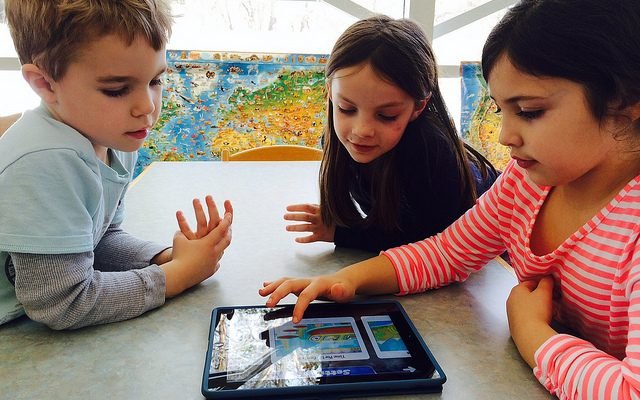Technology is revolutionizing various aspects of education, and special education is no exception. The integration of advanced tools and digital resources is enhancing the learning experience for students with special needs, making education more accessible, personalized, and engaging. Here’s how technology is playing a crucial role in special education:
1. Assistive Technology: Enhancing Accessibility
Why It Matters: Assistive technology helps students with disabilities access educational content and participate in learning activities that might otherwise be challenging. It provides essential support and tools tailored to individual needs.
Examples:
- Screen Readers: Software like JAWS or NVDA helps visually impaired students by reading text aloud.
- Speech-to-Text Software: Tools such as Dragon NaturallySpeaking convert spoken words into text, aiding students with writing difficulties.
- Adaptive Keyboards and Mice: Specialized hardware designed for students with motor impairments.
Impact: Assistive technology enables students to engage with the curriculum and complete assignments independently, fostering a more inclusive learning environment.
2. Personalized Learning: Tailoring Education to Individual Needs
Why It Matters: Personalized learning solutions adapt to each student’s unique abilities and learning style, providing customized educational experiences that enhance understanding and retention.

Examples:
- Adaptive Learning Platforms: Software like IXL and DreamBox adjusts the difficulty level of exercises based on student performance.
- Customizable Educational Apps: Apps such as ModMath allow students to customize their learning experience according to their specific needs.
Impact: Personalized learning tools help address individual strengths and weaknesses, making education more effective and engaging for students with diverse learning requirements.
3. Digital Communication Tools: Bridging Gaps
Why It Matters: Digital communication tools facilitate interaction between students, teachers, and parents, improving collaboration and support for students with special needs.
Examples:
- Augmentative and Alternative Communication (AAC) Devices: Devices like the Tobii Dynavox help non-verbal students communicate through symbols or text.
- Video Conferencing: Platforms like Zoom and Microsoft Teams enable remote learning and virtual meetings, making education more accessible.
Impact: These tools enhance communication and collaboration, allowing students to participate more actively in their education and stay connected with their support network.
4. Interactive and Engaging Content: Making Learning Fun
Why It Matters: Interactive digital content can make learning more engaging and motivating, especially for students who may struggle with traditional teaching methods.
Examples:
- Educational Games: Games like Kahoot! and Prodigy turn learning into a fun and interactive experience.
- Multimedia Resources: Videos, animations, and interactive simulations provide dynamic ways to understand complex concepts.
Impact: Engaging content captures students’ attention and makes learning more enjoyable, which can lead to better retention and academic success.
5. Data-Driven Insights: Monitoring Progress
Why It Matters: Technology enables educators to track and analyze student progress in real-time, allowing for timely interventions and adjustments to teaching strategies.
Examples:
- Learning Management Systems (LMS): Platforms like Google Classroom and Canvas offer tools to track student progress and provide feedback.
- Analytics Tools: Tools like ClassDojo and Edmodo collect data on student performance and engagement.
Impact: Data-driven insights help educators identify areas where students may need additional support, enabling more effective and responsive teaching.
6. Virtual Reality (VR) and Augmented Reality (AR): Immersive Learning Experiences
Why It Matters: VR and AR provide immersive learning experiences that can enhance understanding and engagement for students with special needs.
Examples:
- Virtual Field Trips: VR platforms like Google Expeditions allow students to explore virtual environments and participate in interactive learning experiences.
- AR Educational Apps: Apps like AR Flashcards use augmented reality to bring educational content to life.
Impact: These technologies offer interactive and visually stimulating learning opportunities, making abstract concepts more accessible and engaging.
7. Professional Development for Educators: Training and Support
Why It Matters: Effective integration of technology in special education requires educators to be well-trained in using these tools and resources.
Examples:
- Online Courses: Platforms like Coursera and Udemy offer training for educators on using assistive technology and digital tools.
- Workshops and Seminars: Professional development programs focus on best practices for implementing technology in special education settings.
Impact: Ongoing professional development ensures that educators are equipped with the knowledge and skills needed to effectively use technology in supporting students with special needs.
Conclusion
The integration of technology in special education is transforming the learning experience for students with disabilities. By providing assistive tools, personalized learning solutions, digital communication platforms, and engaging content, technology is enhancing accessibility and fostering a more inclusive educational environment. As advancements continue, the role of technology in special education will likely expand, offering even more innovative ways to support and empower students with special needs.

